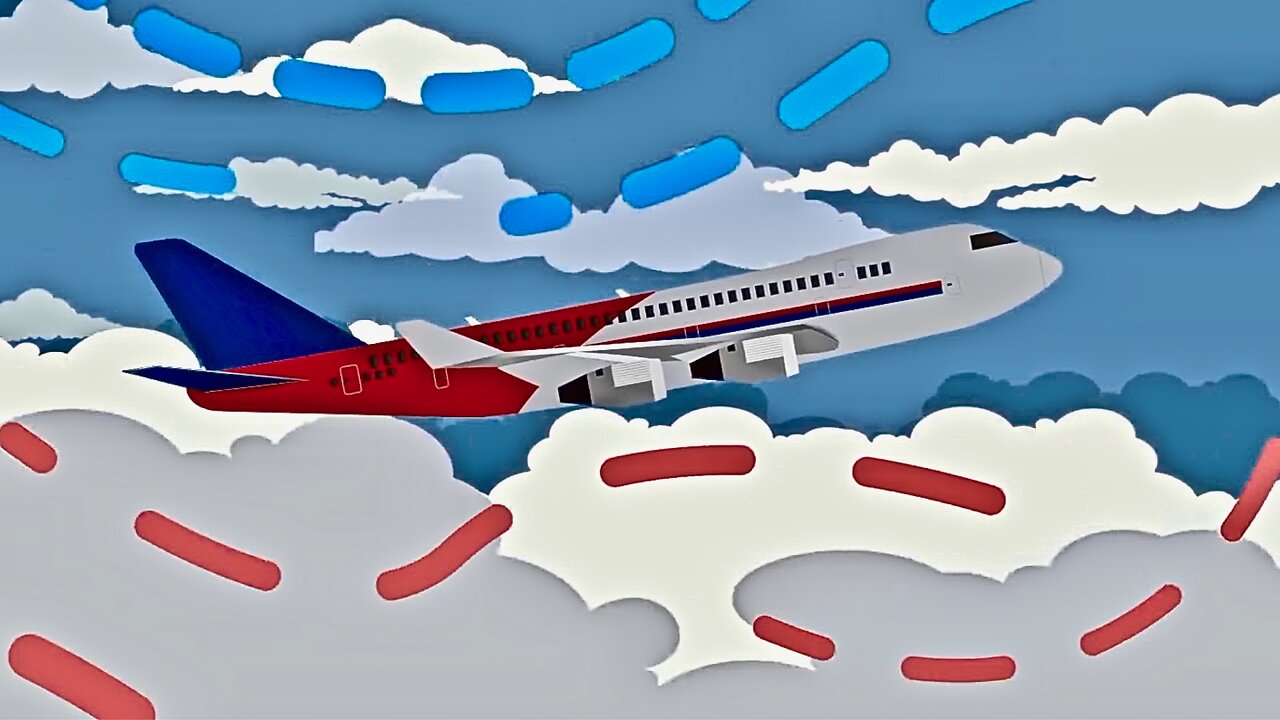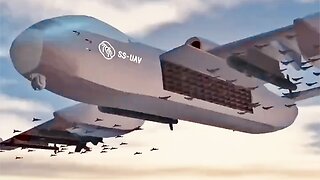Premium Only Content

Don't Worry About Airplane Turbulence - Great Animation Explains It
"Turbulence isn't something to be feared," says Keith Tonkin, who is a former military pilot and director of consultancy group Aviation Projects. "Modern planes are designed to withstand far more force than turbulence can create. They're simply not going to fall apart." He adds that military planes routinely fly into cyclones to take meteorological readings, just to underline how robust they are.
Construction aside, I want to know if turbulence can jolt a plane out of the sky. I remind Tonkin that in November 2001, American Airlines Flight 587 crashed after takeoff from JFK Airport in New York, killing all 260 people on board, along with five on the ground. And the reason? It took off behind another plane, and was brought down by the turbulence in the plane's wake.
But as Tonkin assures me, the problem was that Flight 587 took off too soon. As he points out, human error is the most common reason planes go down, whereas meteorological turbulence is more of a hassle than a danger. "We avoid turbulence because it's stressful for passengers," he says, "but for pilots it's just not an issue."
Turbulence comes in three main categories: thermal, mechanical, and shear. Essentially, all three are small-scale versions of actions you'll have seen in flowing water. Warm air rises, in much the same way as water billows up from the deep. This is called thermal turbulence, and you experience it as a bump as you ram a jet through a rising plume at 500 mph. If you've ever flown through afternoon clouds at takeoff, you'll have probably experienced thermal turbulence.
Then there's mechanical turbulence, which occurs when physical structures such as mountains and buildings disrupt wind currents, much like a boulder causes ripples in a moving stream. This is dangerous, but very easy to predict and pilots simply avoid flying near big structures at low altitudes.
A compilation of planes hitting shear turbulence while landing
The last type is shear turbulence, which basically describes the border between two pockets of conversely moving air. This is the scary one because you often can't predict how bad it'll be, such as the case when the pilot flies a plane in and out of a jet stream.
A jet stream, like a freeway of air, is a band of wind gushing through the upper atmosphere. To minimize fuel consumption, pilots often jump into these streams to get a tail wind. You might have been half asleep to hear the seatbelt light ding on, informing you the pilot is about to move in or out of a jet stream. Usually at this point the pilot will know what to expect, as another plane will have logged the severity of the turbulence over the transitional zone.
Turbulence is recorded and shared across planes according to a rating system. Light turbulence describes a movement of a foot or two, and rattles the drink tray. Moderate turbulence is the point at which air hostesses strap themselves in. Severe turbulence will launch unsecured objects, including people, although most pilots only encounter severe turbulence a few times in a whole career. But extreme turbulence is really the sum of all fears. It this case, a plane can drop or ascend 100 feet in a few seconds, and unbuckled passengers have been killed rattling around the walls. As the US Federal Aviation Administration reports, "From 1980 through 2008, US air carriers had 234 turbulence accidents, resulting in 298 serious injuries and three fatalities."
Music: The Game by Dhruva Aliman
Amazon- https://amzn.to/2MbZ3TF
https://music.apple.com/us/artist/dhruva-aliman/363563637
https://dhruvaaliman.bandcamp.com/album/snooper
http://www.dhruvaaliman.com/
Spotify - https://open.spotify.com/artist/5XiFCr9iBKE6Cupltgnlet
#travel
#flying
#aircraft
-
 6:44
6:44
Seeker Land
1 month agoChina's New Deadly Drone Mothership - Jiu Tian - World's First Airborne UAV Launcher
91 -
 LIVE
LIVE
Barry Cunningham
1 hour agoBREAKING NEWS: PRESIDENT TRUMP MAKES HUGE ANNOUNCEMENT AT THE KENNEDY CENTER!
1,306 watching -
 UPCOMING
UPCOMING
The Big Mig™
3 hours agoComey’s FBI Crafted Russia Media Hoax Lie
2076 -
 LIVE
LIVE
LFA TV
3 hours agoLFA TV ALL DAY STREAM - WEDNESDAY 8/13/25
5,039 watching -
 UPCOMING
UPCOMING
MYLUNCHBREAK CHANNEL PAGE
20 hours ago1800s Fires or Explosions?
5.27K4 -

Caleb Hammer
19 hours agoOkay, I Think I’m Done… | Financial Audit
1K -
 1:36:54
1:36:54
Dear America
3 hours agoTROOPS DEPLOYED IN DC!! TX Senate APPROVES Redraw Of Districts! + Adam Schiff Under Investigation!!
84K52 -
 LIVE
LIVE
JuicyJohns
2 hours ago $0.67 earned#1 REBIRTH ISLAND CONTENT 10+ KD | !loadout !300
125 watching -
 9:13
9:13
Warren Smith - Secret Scholar Society
14 hours agoWhat Nick Fuentes Told Me, Just Hours Before Tucker Carlson Attacked Him...
2.36K7 -

Matt Kohrs
2 hours agoNEW HIGHS INCOMING!!! (Stock Market Open) || Live Trading Apex, Tradeify & TPT
10.4K2